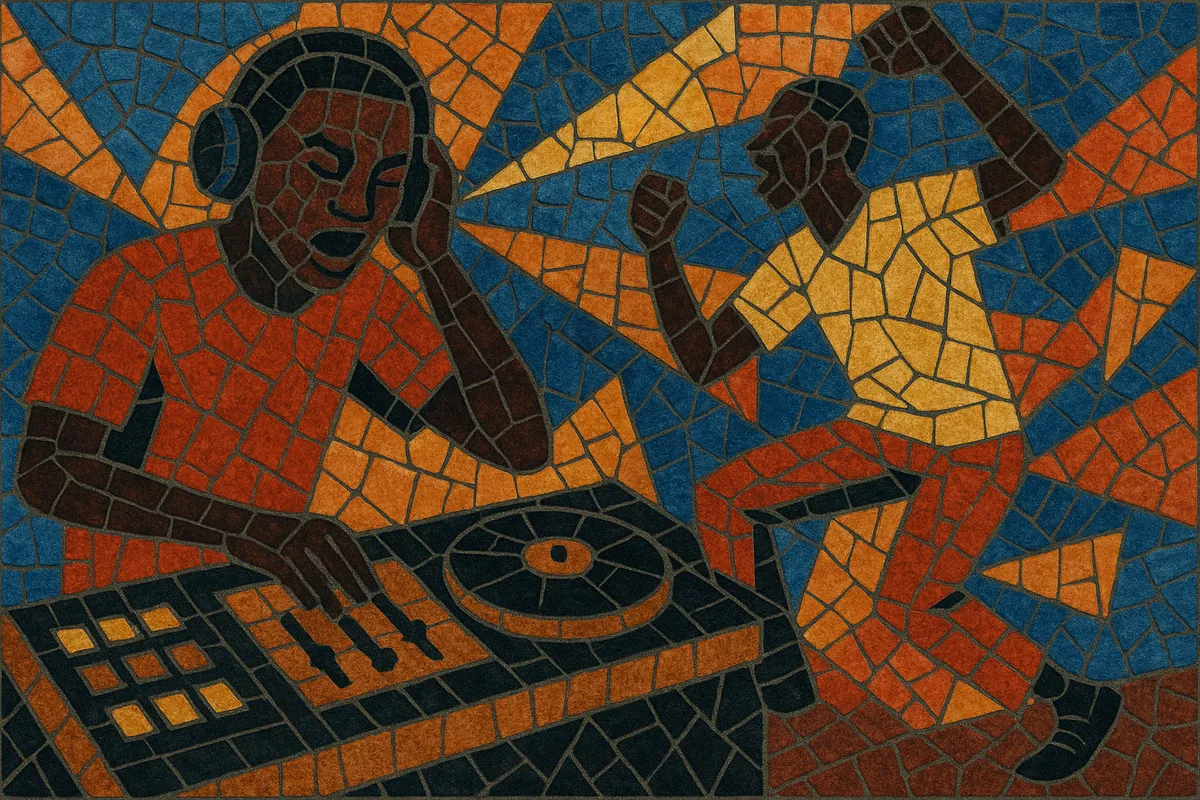Singeli is a high-velocity electronic dance music from Dar es Salaam, Tanzania, characterized by extreme tempos (often 160–300 BPM), loop-driven percussion, and rapid-fire MCing in Swahili. It thrives in street parties, weddings, and neighborhood events, where DJs and MCs drive a call-and-response energy.
Built from inexpensive software and minimal hardware, singeli combines local rhythmic sensibilities with DIY sampling aesthetics. Its sound draws on older coastal styles and urban street music, channeling mchiriku’s raw percussion, taarab’s melodic fragments, and Tanzanian dance-band grooves, while embracing the immediacy and repetition of modern electronic production.
Vocals are central: MCs pivot between social commentary, neighborhood pride, humor, and hype, delivering tongue-twisting verses that match the music’s relentless pace. Labels and studios such as Sisso Studio and Nyege Nyege Tapes helped bring singeli from Dar’s informal circuits to global experimental club stages—without losing its grassroots spirit.
Singeli crystallized in the working-class neighborhoods of Dar es Salaam, particularly Manzese and Mburahati. Local producers and DJs refined ultra-fast loops and hand-programmed beats on home computers, taking cues from mchiriku’s street-born percussion, snippets of taarab and coastal pop, and the momentum of urban Tanzanian party music. The format—DJ plus MC(s)—developed around neighborhood gatherings and weddings, where speed and crowd engagement were paramount.
Small studios such as Sisso Studio became hubs for recording, dubbing, and distributing tracks informally (via memory cards, Bluetooth, and local DJs). Producers favored FL Studio and low-cost keyboards, building libraries of drum patterns, whistles, sirens, and chopped melodic hooks. The scene’s economy was hyperlocal and performance-driven, with reputations built through electrifying live sets and neighborhood acclaim.
Nyege Nyege Tapes (Kampala) released compilations and artist albums that showcased singeli’s speed and inventiveness to global audiences. Artists like Bamba Pana, Jay Mitta, and DJ Sisso toured festivals, situating singeli alongside experimental club music while keeping its Dar es Salaam identity intact.
Singeli continued to evolve, balancing grassroots street credibility with global bookings. New producers and MCs pushed tempos, incorporated fresh samples, and experimented with structure. The style influenced parts of the experimental club ecosystem while retaining its core: breakneck rhythm, looping immediacy, and MC-led energy rooted in Swahili street culture.


